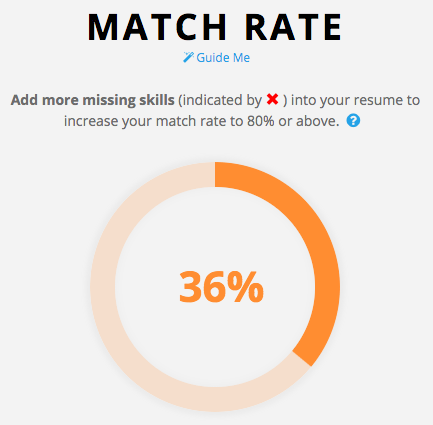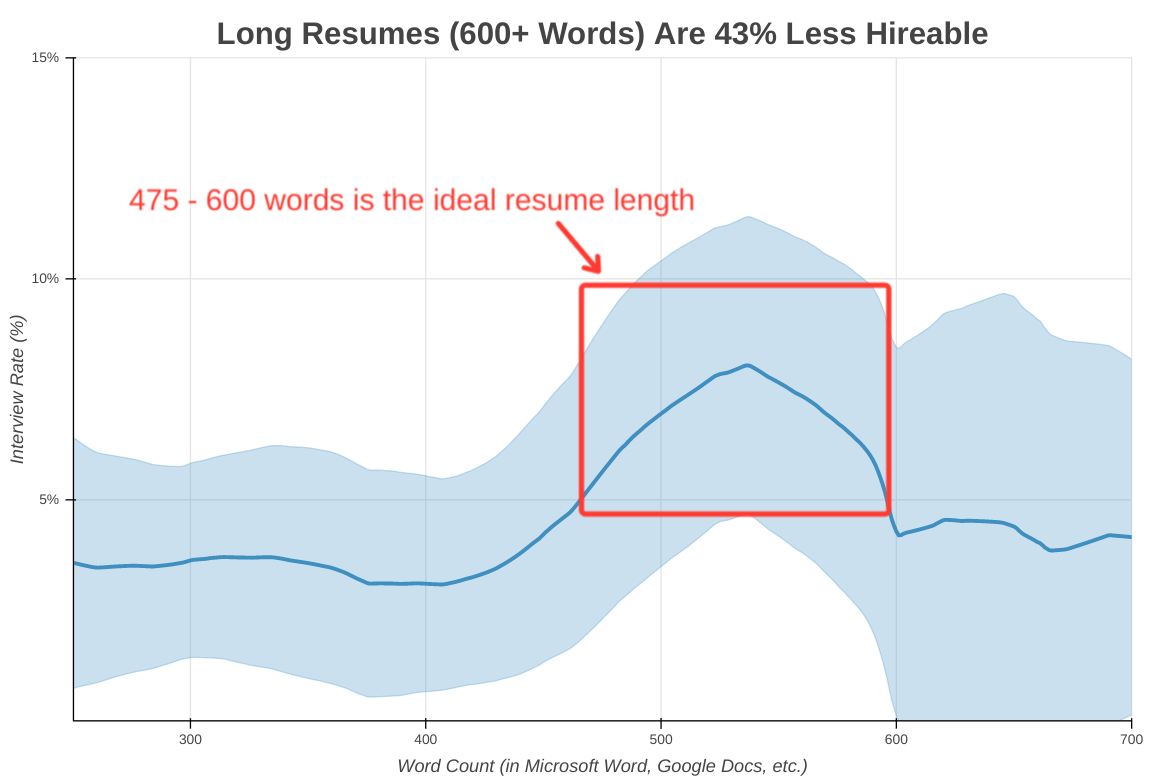Step 1: Are you Focused?
Are you using the same resume to apply for BizOps, BizDev, and CorpDev roles?
Uh oh.
That’s the career equivalent of buying one-size-fits-all shoes.
Sure, it will save you some time, but the fit’s going to be way off. And fit is everything for the recruiters who screen your resume.
After all, if you need to hire a PM, would you rather hire a laser-focused PM or a jack-of-all-trades who has a little PM experience?
So make sure your resume is focused on just one kind of job. And if you want to apply for another role, create a new version that’s focused specifically on that!
Don’t be this guy.
Instead, be focused.
Step 2: Are you applying for the right role?
Are your resumes going into an online black hole, never to be seen again?
If so, you may be applying for the wrong role.
Specifically, you may not seem like a credible candidate to the recruiter, which is why you’re never hearing back.
The easiest way to find out is to run your resume through Jobscan. If your match rate with your desired job’s keywords is low, ask yourself “Do I already have these skills?”
If so, just make sure to include them using the technique described below.
If not, consider applying for another role that’s a better fit for your existing skills.
Step 3: Do you have the right keywords on your resume?
If you have the actual skills needed for the job but not the right keywords according to Jobscan, it’s most likely that your resume is getting blocked by the Applicant Tracking System (ATS).
Since this system screens resumes for the keywords in the job description, it’s essential that you include them. Just don’t get hung up on the language.
As you’ll see in the Recommended Keywords for each role, tech job descriptions tend to use lots of lingo (e.g., “set OKRs” = "establish goals”). But chances are that you’ve actually got the underlying experience, so be sure to take credit for it!
Step 4: Is Your Resume Impressive Enough?
If your resume has the right keywords, chances are that the ATS is passing it on to an actual human recruiter.
But even a human recruiter’s attention is limited to 5-10 seconds per resume since they’re often juggling 10+ open jobs with 1,000+ applicants each!
So your resume needs to instantly scream: “I’m awesome.”
Even someone just starting out has the power to make their resume stand out.
And the easiest way to do that when the recruiter is going 100 miles an hour is to include visual signals of quality:
Impressive brands: “Partnered with Google to overhaul my school’s IT system”
Big numbers: “Saved my company more than $50,000 by renegotiating our equipment contract”
Accolades: “Selected to serve on our employee board of advisors by the CEO”
You are your positioning. So make sure your positioning is fully aligned with the job you want - not just the job you used to have.
Step 5: Is Your Resume Relevant Enough?
Even with the right keywords and impressive achievements, your resume may still not be an obvious fit if your experiences or positioning don’t seem relevant (e.g., you’ve been a teacher and now you want to be a trainer). Here’s how to overcome this relevance gap:
Include a relevant Headline + Summary
Just like LinkedIn lets you brand yourself at the very top of your profile, do the same at the top of your resume. If you’re applying for a Training Manager role, call yourself a Training Manager. And then back it up with a relevant Summary: “Training Manager with a track record of delivering award-winning presentations…”
Make your titles relevant
If you had an arbitrary title in your past role (e.g., Learning Faculty) but were actually doing something similar to your desired role, be sure to change your title to reflect the true role (e.g., Trainer). This is not only fair (since you’re just indicating what you really did), but it will also significantly improve your chances (since the most important keyword recruiters search for is their job’s title - and your most recent job title is the first place they search!).
Step 6: Is Your Resume Clear Enough?
And finally, even a resume with the most impressive, relevant accomplishments is bound to fail if the recruiter doesn’t fully understand it.
So here are three things to watch out for:
Less really is more when it comes to resume clarity - and interview opportunities! (Source: TalentWorks)
Including too many bullets
Your resume isn’t the entire game tape of your career - instead, it’s a SportsCenter highlight reel of just the best things you’ve done. So stick to 1-5 bullets per experience. Any more and the recruiter won’t know what to pay attention to!
Including too much jargon
You may have been the Queen of TPS reports at your last job - but if no one outside of your company has ever heard of them, ditch the exclusive lingo.
Including too much detail
A great interview story has drama, intrigue, and lots of colorful details. A great resume bullet has an action and an outcome. So save the details for the interview room and just focus on the facts that can be absorbed in a 10-second scan!
Bonus step: Take the Course
If you want to really maximize your chances of turning your resume into interviews, check out my online course.
It’s got a step-by-step process to boost your odds at each step of the application process (including an optional resume review):
Leverage my personal resume template that’s earned offers from Google and Amazon to Udacity and 23andMe
Optimize your LinkedIn profile so you start getting interview requests straight from recruiters
Connect directly with insiders at any company in the world - from recruiters all the way to your future boss
“My completion percentage of Jeremy’s course had an almost direct correlation with me getting a job.”
















